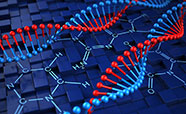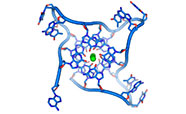Pharmacogenetics & genomics research
Pharmacogenetics of adverse drug reactions
Genetic differences between people can impact on their responses to therapeutic drugs. We are exploring genes which may contribute to such variation in outcomes of drug treatment.
Depending on the nature of the drug response or reaction, we will either home in on specific genes that control metabolism of drugs (like CYP2D6, CYP2C9 or CYP2C19) , or apply more advanced and comprehensive genomic methods, to identify potential genetic differences that may explain these differences in the outcomes of drug treatment. This work is part of a research study called UDRUGS (Understanding Drug Reactions and Unusual Responses by Genome Sequencing), that involves patients with various serious adverse drug reactions or unusual drug responses, for a range drugs.
Pharmacogenomics of mood disorders
We are examining the effects of drugs used for treatment of mood disorders, such as valproate acid or lithium, on patterns of gene expression.
Much of this work is being carried out in the serotonergic cell line RN46A. Genes that are regulated by these drugs may be important in therapeutic responses, and looking at patterns of gene expression change may provide insights into the mechanisms of action of these drugs.
Genetics & epigenetics of complex disease research
Gene x environment interactions in health and development
Professor Martin Kennedy is a co-investigator with Associate Professors John Horwood and Joseph Boden on an HRC programme grant centred on Christchurch Health and Development Study (CHDS), a forty year longitudinal study of >1000 Christchurch babies born in 1977.
The focus of the Gene Structure and Function Lab involvement in this programme is gene by environment interactions, epigenetic and epigenomic studies, and analysis of genetic factors underlying personality and mental health, in the context of international research consortia including the Psychiatric Genomics Consortium.
As part of the Genes, Environment, Development Initiative (GEDI) funded by the National Institute on Drug Abuse (NIDA) USA, and in collaboration with Drs Jane Costello (Duke) and Patrick Sullivan (UNC), we obtained gene chip (Illumina 660W Quad) SNP genotype data on 780 CHDS participants.
We are also acquiring methylome data on subsets of the cohort using Illumina EPIC 850K chips. These data are primarily being used to investigate genetic and environmental influences on substance use and addiction, but we are also interested in other collaborative studies that might make use of this body of data and the longitudinal information collected over 30 years for the CHDS.
Eating disorders genetics
Professor Martin Kennedy and Dr Jenny Jordan from the Department of Psychological Medicine, have contributed over 500 New Zealand samples to the Australasian arm of a large international study, Anorexia Nervosa Genetics Initiative (ANGI), which seeks to understand genetic factors that predispose to the eating disorder Anorexia nervosa.
- Eating Disorders Genetics Research (New Zealand)
- New Zealanders involved in global study showing genetic predisposition for anorexia (press release)
- Watch Dr Jenny Jordan's Health Research Lecture on the genetics of anorexia (May 2018)
- Anorexia Nervosa Genetics Initiative (ANGI)
- Genome-wide association study identifies eight risk loci and implicates metabo-psychiatric origins for anorexia nervosa
Other areas of genetic research
G-quadruplex structures in DNA
We are exploring the role of unusual DNA structures called DNA quadruplexes, particularly with regard to the process of genomic imprinting. These structures form in single stranded DNA and RNA, and involve bonding between “G” bases in an unusual manner.
It is clear that these structures form in DNA and RNA within cells, and they play many important functions, although much remains to be learnt about the full range of their roles in the cell.
Nanopore DNA sequencing
We have been trialling the Oxford Nanopore Technologies tiny DNA sequencing device, called the MinION, since mid-2014. This device is half the size of a cellphone, and is currently capable of generating over 10Gb of DNA sequence information during a 48 hour run.
The MinION passes single DNA (or RNA) strands through protein nanopores, reading the bases as they pass through and feeding the data to a computer. Apart from its tiny size and low capital cost, is that it can read very long DNA fragments, something that allows for many novel applications.
We are exploring the use of the MinION for many applications in the laboratory, including analysis of DNA variants in pharmacogenes such as CYP2D6, HLA locus regions important in adverse drug reactions, and alternative splicing in disease genes such as BRCA1. We will continue to develop new projects that employ the device, and help to foster its wider use amongst colleagues and collaborators.
Funding for the Gene Structure and Function Laboratory
Our research is sponsored by the following organisations:


